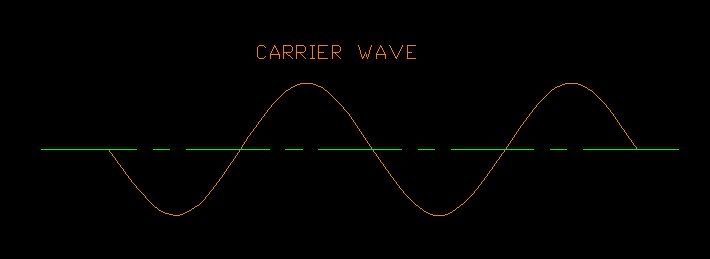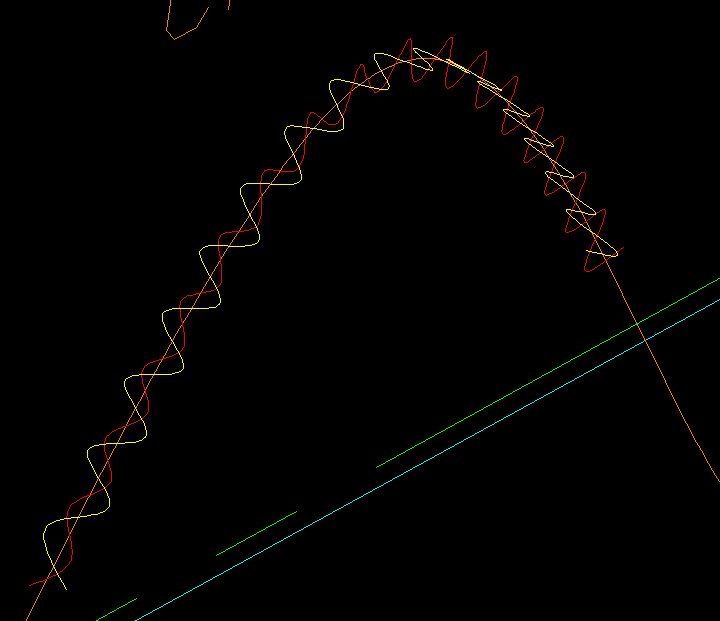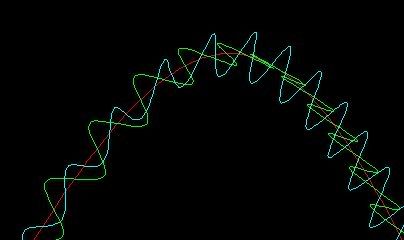


for what little it is worth :)
Posted on 01/05/2006 8:42:46 AM PST by jbwbubba
AN EXTRAORDINARY "hyperspace" engine that could make interstellar space travel a reality by flying into other dimensions is being investigated by the United States government.
The hypothetical device, which has been outlined in principle but is based on a controversial theory about the fabric of the universe, could potentially allow a spacecraft to travel to Mars in three hours and journey to a star 11 light years away in just 80 days, according to a report in today's New Scientist magazine.
The theoretical engine works by creating an intense magnetic field that, according to ideas first developed by the late scientist Burkhard Heim in the 1950s, would produce a gravitational field and result in thrust for a spacecraft.
Also, if a large enough magnetic field was created, the craft would slip into a different dimension, where the speed of light is faster, allowing incredible speeds to be reached. Switching off the magnetic field would result in the engine reappearing in our current dimension.
The US air force has expressed an interest in the idea and scientists working for the American Department of Energy - which has a device known as the Z Machine that could generate the kind of magnetic fields required to drive the engine - say they may carry out a test if the theory withstands further scrutiny.
(Excerpt) Read more at news.scotsman.com ...
Right, but the nuclear pile was not a result of Einstein's theories. It would have worked anyway. The theory did lead indirectly to a hypothesis of why so much energy is liberated, and that is sort of verified by later experiments with cloud chambers and other detectors.
Is "dimension" a proper scientific term in this sense? I tend to think of a dimension as being a line of measurement (time, mass, distance, etc.), not a place or a region, or generally something you can physically go to. What exactly are they talking about when they say "dimension" in this context?
All modern field theories involve more than the regular 3+1 (x,y,z and time) dimensions - string theory, M-theory, and so on. Heim theories (there is a class of them) have between 6 and 12 dimensions. For example, original Heim theory has 6 dimensions, sufficient for deriving the masses of elementary particles. To generate the quantum electrodynamical and QCD structures of the standard model, 8 total dimensions are needed. The 12 dimensional model has something to do with additional gravitational forces required to explain a form of dark energy possibly responsible for observations of an accelerating universe. In each case, the dimensions can be added in brute force by hand and they see what comes out (it is done in general enough a way to be meaningful upon a sort of "parameter fit", like Klein theory) OR, as in string theory, arise naturally from imposing Lorentz invariance. String theories now have as many as 26 dimensions.
Now, what are these dimensions? They are still space-time dimensions (from the math at least). But we don't see them. This is unacceptable - we would like all facets of our models to be examinable. But, at the same time, the formalism works so well. Rather than discard it, it is hypothesized that the extra dimensions CAN be detected, but it is really really hard (and bounds are given for which these theories can be falsified via consistency checks).
One way is to say that the extra dimensions are "compactified", generally by causing them to loop back upon themselves.
The analogy presented to me for this is the multidimensional garden hose. If the hose is viewed from far away, it appears to have only one dimension, say length. If, however, you go closer to the hose, you see that it contains a second dimension, circumference. The "extra dimension" is only visible within a relatively close range to the hose, just as the extra dimensions in the string/etc theories are visible at extremely small distances, and thus are not easily detected.
(A point of clarification - garden hoses exist in three spatial dimensions, but for the purposes of this analogy, we neglect the thickness and consider only motion on the hose surface. A point on this surface can be specified by two numbers, a distance along the hose from one end of the hose, and a distance along the circumference (from say the top) - same idea as using latitude and longitude for earth. Like for earth, the object has two spatial dimensions. Unlike the Earth, the space we are trying to make an analogy for has no interior.)
Another possibility is that the visible universe is a large "D-brane" extending over the three usual spatial dimensions. All objects (the components of pens, cats, Tom Cruise, etc) are made of open strings which are bound to the D-brane, and cannot move "at right angles to reality" to explore the universe outside the brane. This is called "brane cosmology". Gravitons, which carry gravitational forces, are vibrational states of closed strings - in other words, gravity is not due to open strings. Because closed strings do not have to be attached to D-branes, gravitational effects could depend upon the extra dimensions at right angles to the brane. Again, this scenario is testable (falsifiable).
bookmark
Could be worse, they could go through uranus first =^)
CC
Eddies in the time-space continuum...
The distance between the earth and the sun is 93,000,000 miles. The time it takes light to travel this distance is 93,000,000 miles/186,000 miles/sec or 500 seconds. Hence the time is 500sec/60 or 8.333 minutes.
And you could probably get a DeLorean for peanuts these days.
Yes we are. What an exciting time to be alive... (no hint of sarcasm, seriously)
That's where I'd be too if Valerie Bertinelli kicked me to the curb. ;-)
And distressing in some respects: my high school and college courses in science are becoming ever more dated. I expect that within a decade or two, Einstein will be as stale as Newton was after Einstein.
So these extra dimensions are like the three spatial dimensions that we know, in that they're all orthogonal to each other? If that's the case, then what's the advantage, for the purposes of this project, of traveling along one of these dimensions?
To simplify things down by eliminating a dimension, let's picture a table top as representing the universe, and I want to go from one point on top of the table to another. Moving in normal space, that is, moving along the surface of the table, I'm limited by the speed of light. But if I use this magnetic gizmo that they're devising which enables me to punch through to an orthogonal dimension and go "up", I'm not changing my position over the table, so that doesn't really help me much.
Now are they saying that by using this device, I don't limit myself to the up/down dimension, but can go anywhere at all above the surface of the table? Or would I have to go up some distance, and then activate the thing again in order to bang left, and then do it again to go down?
Or do I have the totally wrong conception of what these extra dimensions are like?
But this is very misleading. Above the table, you have access to new fundamental interactions.
It is regularly said, that there are four fundamental forces, with particles interacting through them via carrier particles:
1. The strong nuclear force, carried by gluons
2. The electromagnetic force, carried by photons
3. The weak nuclear force, carried by Z and W bosons
4. The gravitational force, carried by gravitons.
And these can all be unified (with #4 being the trickiest, and we aren't quite there yet, IMO). Now, Heim theory predicts that there are also 2 other forces, with 2 new charge carriers:
5. quintons (I think! I forget the name, it is something like that) that carry a very weak REPULSIVE gravity-like force.
6. gravito-photons, which can act to convert an electromagnetic field into a (new) gravitational field, which acts in addition to the usual one.
So, my understanding of all this, which is probably flawed in some way since I am not active in this area, is that in order to access the other dimensions, you must produce gravito-photon and quinton excitations (via an electromagnetic field) - and these excitations result in a change in the gravitational field in the region of electromagnetic field generation. The theory seems to have no intrinsic limitation on the speed of light, or on the magnitude of the above field effect.
And this should be read with 2 things in mind. Again, this is not my area, that is number one. Number two, though this is not quack science (there are lots of quacks who like to cite it though, haha), it doesn't rest on the firmest theoretical ground. Peer review has been difficult (not that it would be definitive), since Heim produced most of his results outside of academia. He was involved in an accident which cost him his sight, his hearing, and the use of both his hands, AFTER which he did his research - the work is in German, uses nonstandard notation, involves the use of a new type of calculus (selector calculus - similar to finite element methods), and is full of small errors (he chose a shoddy publishing company). It looks honest, it looks methodical, and it looks like properly done science. It could still be all wrong though.



for what little it is worth :)
Disclaimer: Opinions posted on Free Republic are those of the individual posters and do not necessarily represent the opinion of Free Republic or its management. All materials posted herein are protected by copyright law and the exemption for fair use of copyrighted works.